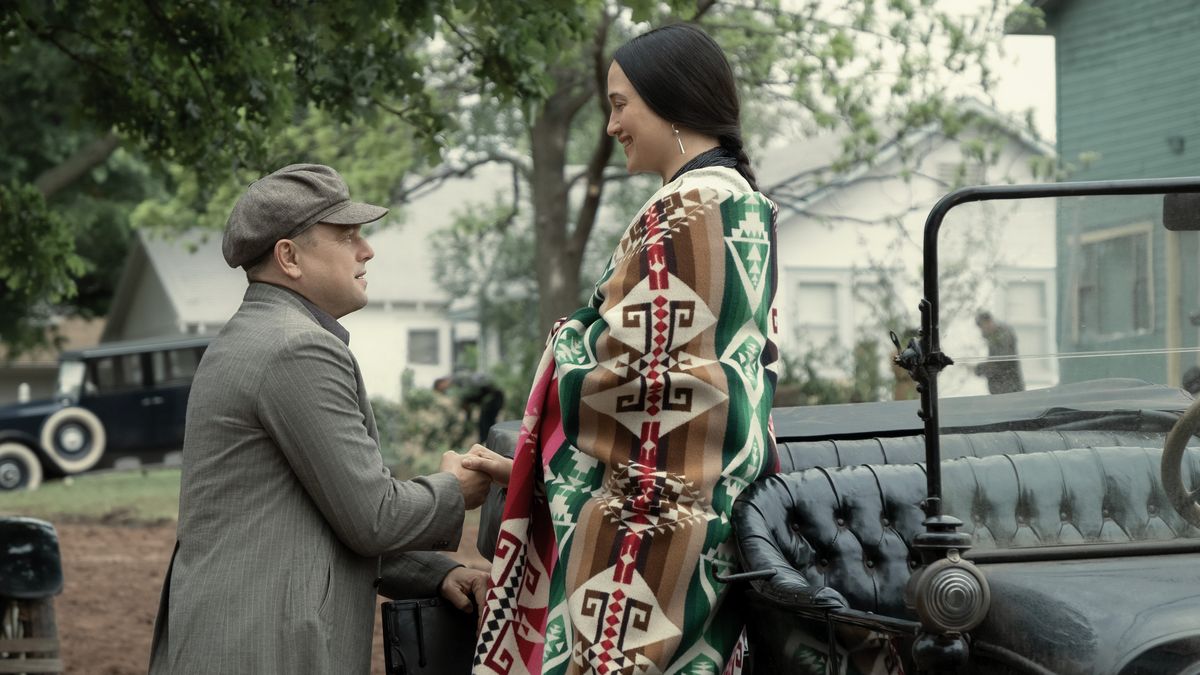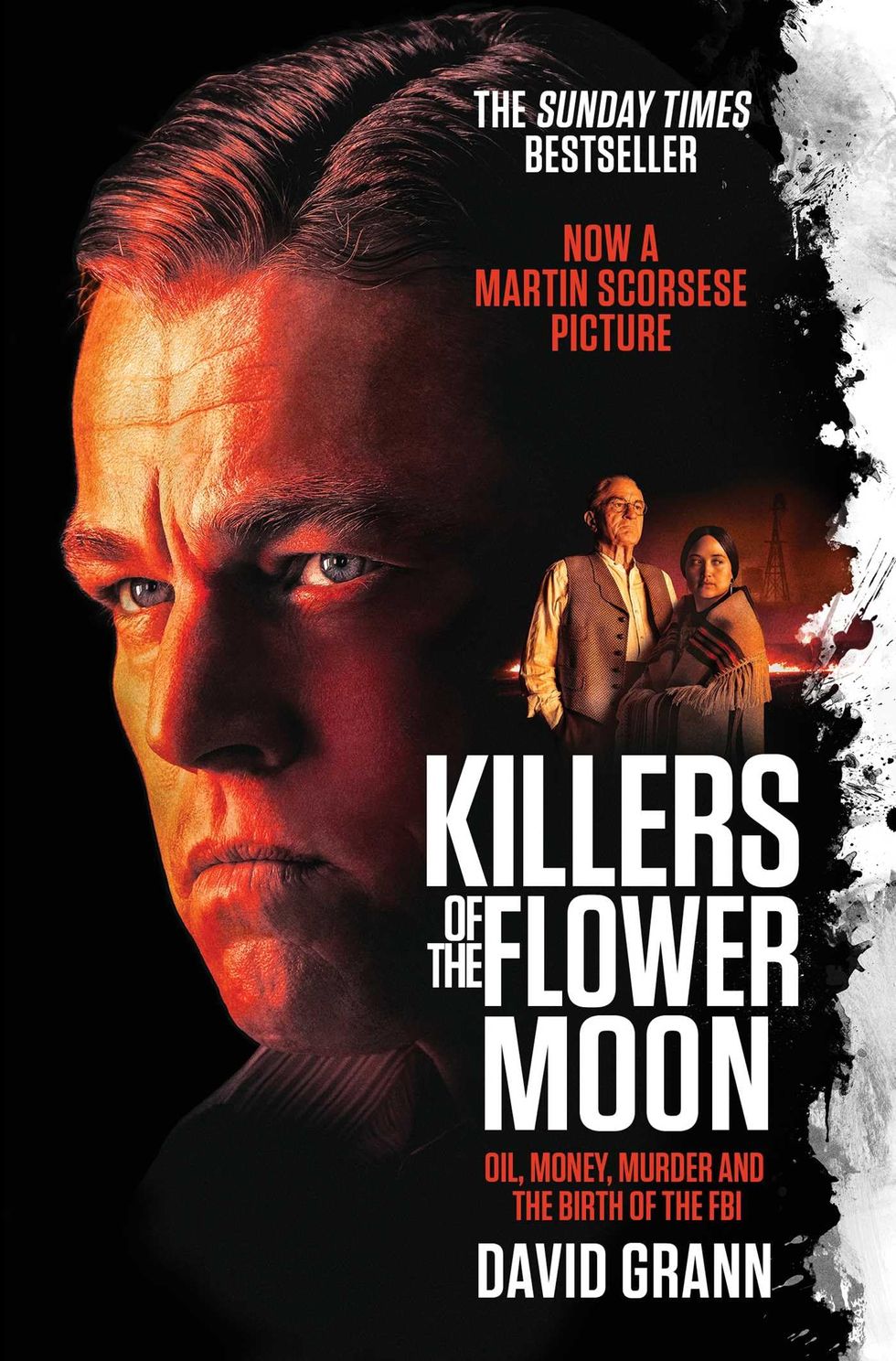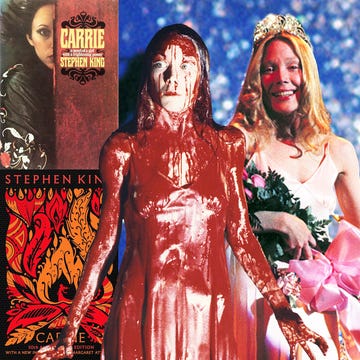Barbenheimer is no more, but fret not: another blockbuster is here to dominate our water cooler conversations.
Killers of the Flower Moon, directed by Martin Scorsese, co-written with Eric Roth and starring Leonardo DiCaprio, Robert De Niro, Jesse Plemons, Lily Gladstone and John Lithgow (to name just a few members of the stellar cast), is set in 1920s Oklahoma, and according to the official synopsis “depicts the serial murder of members of the oil-wealthy Osage Nation, a string of brutal crimes that came to be known as the Reign of Terror”.
The movie, which is out in cinemas today and will be streamed at a later date on Apple TV+, is based on a 2017 book by David Grann, called Killers of the Flower Moon: The Osage Murders and the Birth of the FBI. So what actually happened to the Native American tribe during that shameful period of American history, and how were the killings solved?
The background
At the turn of the 1900s, America was in the midst of an oil rush. In 1897, huge crude oil reserves were found in the grounds of the Osage Native American reservation in Oklahoma.
By 1920, the price of oil had shot up thanks in part to an increase in car users, and it made the Osage tribe incredibly wealthy – in 1923, it was reported that they made $30 million dollars in a year ($400 million in today’s money), which made them one of the richest communities in the world at the time.
It wasn't long before non-Osage people from across the country moved to the area in order to take advantage of the boom. From low-level criminals who moved to the area in the hope of scamming some cash, to local shopkeepers who jacked up prices for Osage customers, it later spread to government-level corruption. In 1921, US Congress passed a law which stated that courts would appoint guardians for members of the Osage with "half-blood" or more in ancestry. That way, non-Osage citizens would manage their money until they demonstrated “competency”. These guardians were usually local white men, lawyers and businessmen.
Unsurprisingly, the system was quickly corrupted, and the incentives for wrong-doing were overwhelming. Some guardians would steal land, their headrights (land “given” to Native Americans by European settlers) or royalties. And then things got even darker.
The murders
In May 1921, the first body was found: 36-year-old Anna Brown, discovered in a remote ravine of Osage County. Over a short period of time, 18 more people were found dead from the Osage tribe, and three non-natives. This terrifying time for the local community was dubbed the “Reign of Terror”.
The precursor to the FBI, the Bureau Of Investigations (BOI) was brought in to investigate in 1925, when the murder rate was alarmingly high. Osage people were being killed and guardians were picking up all their land, inheritance and cash.
The Osage Tribal Council had their suspicions as to who was behind many of the murders, and the Commissioner of Indian Affairs in the Department of the Interior sent four undercover investigators to examine the case.
It took two years – as many townspeople had been bribed and intimidated into silence – but they finally uncovered one of the prominent perpetrators behind the Reign of Terror: a man named William Hale, who was a local cattleman, and who was known in the area as the “King of Osage Hills.”
Hale (played by De Niro in the film) and his nephews, Ernest and Bryan Burkhart, moved from Texas to Osage and began their campaign of stealing wealth from the Osage tribe by any means necessary. While living in Osage, Ernest (DiCaprio) married Mollie Kyle (Gladstone), who was a full-blooded Osage.
Hale then arranged the cold-blooded murders of Kyle’s mother, sisters, her brother-in-law and her cousin, so that all the her rights and wealth would be transferred from each family member to Burkhart. Then, investigators found out that Mollie was being slowly poisoned.
Eventually, Hale, Ernest, Bryan and a ranch hand were charged with the murder of Kyle’s family. They were convicted in trials lasting from 1926 to 1929, and sentenced to life imprisonment, however they were eventually granted parole.
Kyle survived the poisoning, and divorced her husband. Her children inherited all of her estate when she died of unrelated causes in 1937.
The aftermath
As a result of the murders, in 1925, US Congress passed a law that ensured non-Osage would not inherit headrights from Osage who had half or more Native American ancestry. In 2011, the U.S. government settled with the Osage for $380 million for historical losses.
‘Killers of the Flower Moon’ is in cinemas now















